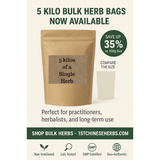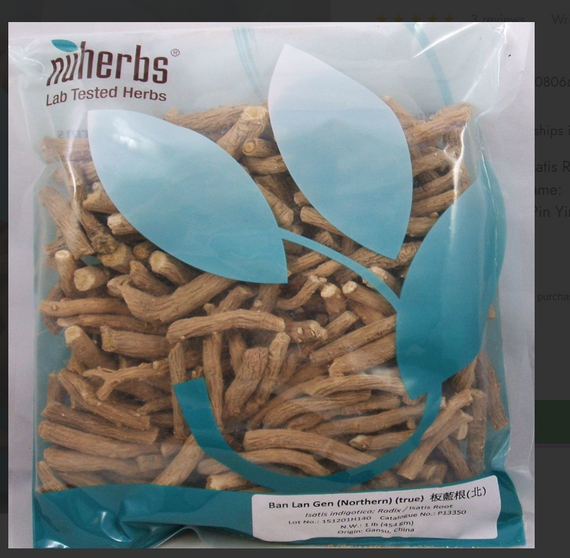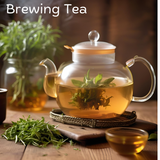There are no products listed under this category.
Crafting the Perfect Herbal Brew: A Guide to Brewing Your Own Herbal Tea
Step beyond the ordinary teabag and into a cup that looks like a garden in full bloom. With just the right water temperature and steep time, rose petals blush ruby-pink, hibiscus unfurls its tangy crimson, and mint leaves release a cool green breeze—all in your mug. Whether you crave a calming floral nightcap or a vibrant berry-bright iced tea, this guide turns pantry petals, soft berries, and tender leaves into barista-worthy, antioxidant-rich infusions you can master at home in minutes.
Quick-Look Steep Chart — Chinese Herbal Flowers & Leaves
*Use double the weight for cold infusions.
| Botanical (Pinyin / English) | Water Temp | Steep Time | Dry Ratio* | Flavor Profile | Traditional Benefit |
|---|---|---|---|---|---|
| 菊花 (Jú Huā / Chrysanthemum Flower) | 185 °F / 85 °C | 4–5 min | 1 Tbsp / 8 oz | Sweet-floral, faint chrysalis | Clears wind-heat, soothes eyes |
| 玫瑰花 (Méi Guī Huā / Rose Bud) | 175 °F / 80 °C | 3–4 min | 2 tsp / 8 oz | Soft rose, lightly sweet | Moves Liver Qi, brightens complexion |
| 金银花 (Jīn Yín Huā / Honeysuckle Flower) | 200 °F / 93 °C | 6–8 min | 1 Tbsp / 8 oz | Mildly sweet, grassy | Clears toxic heat, throat comfort |
| 桂花 (Guì Huā / Osmanthus Flower) | 180 °F / 82 °C | 2–3 min | 1 tsp / 8 oz | Apricot-peach aroma | Warms & harmonizes, sweetens breath |
| 桑叶 (Sāng Yè / Mulberry Leaf) | 195 °F / 90 °C | 5–6 min | 1 Tbsp / 8 oz | Fresh green, hint of sweetness | Disperses lung heat, moistens dryness |
| 薄荷 (Bò Hé / Chinese Mint Leaf) | 185 °F / 85 °C | 3 min | 1 tsp / 8 oz | Cool mint, crisp | Releases exterior wind-heat, clears head |
Water, Temperature & Gear
-
Filtered or spring water—chlorine mutes delicate florals.
-
Variable-temp kettle (175–205 °F).
-
Glass or porcelain teapot—no flavor carry-over.
-
Fine-mesh infuser for small petals; French press for chunky berry blends.
Step-by-Step Brewing
-
Pre-Warm mug/kettle, then discard water.
-
Weigh or scoop botanicals (see chart).
-
Pour water at target temp; cover.
-
Steep & Stir—berries need a mid-steep swirl to release pectin.
-
Strain Completely; residual soaking causes bitterness.
-
Taste Test; sweeten only if needed with raw honey or monk-fruit.
Cold-Brew Shortcuts
-
Double botanical ratio, room-temp water, fridge 6–8 h.
-
Strain, add citrus slices, serve over ice—zero tannin bite.
Cold Brew vs. Hot Brew — Key Differences & When to Choose Each
Why Pick Cold Brew?
-
Lower bitterness & acidity → easy-sipping iced blends.
-
Vitamin retention for fruits/flowers that lose potency in heat.
-
Hydration: naturally sweeter taste encourages higher fluid intake in hot weather.
Why Pick Hot Brew?
-
Speed: ready in minutes.
-
Higher therapeutic yield for resinous or thick plant parts.
-
Aromatherapy effect: rising steam carries mood-lifting volatile oils (mint, osmanthus, rose).
Bottom line:
Use cold brew when you want a mellow, nutrient-preserving, make-ahead beverage—especially with delicate petals or tart berries. Choose hot brew when you need rapid preparation, aromatic intensity, or maximum extraction from sturdy herbs and roots.
| Aspect | Cold Brew | Hot Brew |
|---|---|---|
| Water Temperature | Room-temp to refrigerated (60–75 °F / 16–24 °C) | 175–212 °F / 80–100 °C, matched to herb type |
| Steep Time | Long: 4–12 hours (often fridge overnight) | Short: 2–10 minutes |
| Compounds Extracted | More heat-sensitive vitamins, fruit acids, simple sugars; lower tannins & caffeine; fewer essential oils | Broad spectrum: volatile aromatics, polyphenols, bitter alkaloids, polysaccharides (if ≥ 185 °F) |
| Flavor & Body | Smoother, less astringent, naturally sweeter; lighter aroma | Brighter, bolder flavor; stronger color; fuller mouthfeel |
| Shelf Life After Brewing | 48 h refrigerated before flavor fades | Best within 2 h; can refrigerate up to 24 h |
| Best For | Summer iced teas, tannin-rich herbs (hibiscus, green mulberry leaf), sensitive vitamins (C in rose hip) | Fast single-cup prep, cold-dispelling formulas, tougher roots or berries that need heat (hawthorn, goji) |
| Energy Use & Gear | Zero energy once chilled; needs fridge space | Kettle or stovetop energy; no refrigeration required for immediate use |
Signature Chinese-Herb Blends
| Blend (Parts by Volume) | Flavor Profile | Target Need |
|---|---|---|
| Moonlit Serenity – Bai He (Lily Bulb) 2, He Huan Hua (Albizzia Flower) 1, Jú Huā (Chrysanthemum) 1 | Soft floral with a gentle honey note | Calm the shén, ease tension, support restful sleep |
| Radiant Qi Glow – Méi Guī Huā (Rose Bud) 2, Sāng Shēn Zi (Mulberry Berry) 1, Jú Huā (Chrysanthemum) 1 | Tart-rose with subtle berry sweetness | Promote healthy complexion, nourish Blood & Yin |
| Digestive Harmony – Bò Hé (Chinese Mint) 2, Méi Guī Huā (Rose Bud) 1, Shān Zhā (Hawthorn Berry) ½ | Cool mint with light fruity tang | Soothe post-meal bloating, move Liver-Qi, aid digestion |
If the flavor’s not your favorite, no worries—there are easy ways to tweak it
Flavor Fixes & FAQs
Weak brew? Add 1 minute or ½ tsp more herbs.
Too bitter? Reduce temp by 10 °F or cut steep 60 s.
Caffeine? Zero unless mixed with green/black tea.
Reuse? Flowers/leaves: 1 resteep; berries: single use.
Sweetener? Honey, Stevia, Monk Fruit - Or even a sprag of mint, a splash on lemon.
- Shop & Save
- Key Takeaways
-
Match water temperature + steep time to each botanical.
-
Store in dark, airtight containers to lock in actives.
-
Use cold infusions for tannin-free summer refreshers.
-
Ready to brew? Scroll back to the Quick-Look Chart or hit “Shop & Save” to start sipping nature’s most colorful cup.











